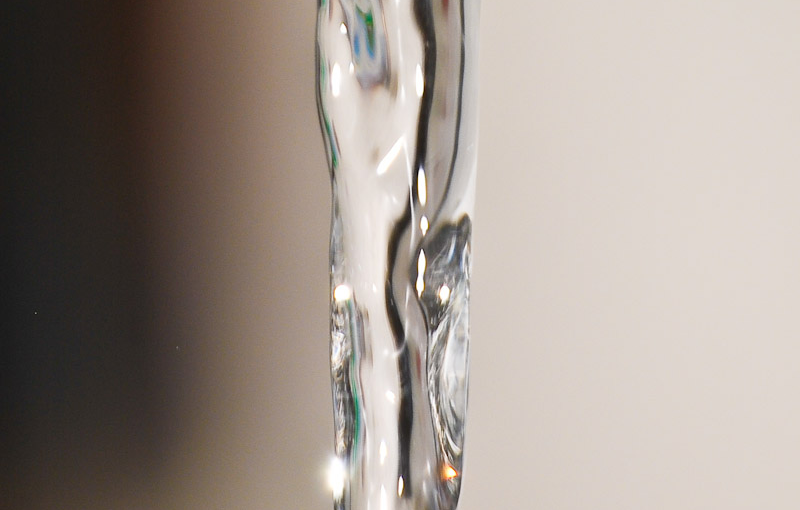In the UK, the food, drink, cosmetics and pharmaceutical manufacturing standards for industrial water quality must adhere to the standards outlined in the British Pharmacopoeia (BP) and European Pharmacopoeia (EP). Exporters to the USA also need to comply with American FDA standards Complying with these standards involves ensuring that all water treatment systems used in your facility are working as they should be. Fortunately, the standards required of manufacturing water by the BP, EP and FDA are very similar.
Peter Wood
Recent Posts
Industrial Water Quality Standards – Are You Up To Scratch?
Topics: Industrial Water Quality, FDA Standards
How Much Water Does A Reverse Osmosis System Waste And What's A Good Alternative?
In order to ensure that your facility runs smoothly, you need to know that your water treatment system is running as efficiently as possible. If recent changes to policy are demanding a better water footprint, you may be wondering whether the reverse osmosis (RO) system you’re currently using is helping your facility meet these objectives. This article will look at water wastage with RO systems, as compared to alternative solutions.
Topics: Reverse Osmosis
Is Your Cosmetics Business Meeting The FDA Water Standards?
The quality of the water used in manufacturing cosmetic products is absolutely crucial, especially if you are producing for the export market. Many cosmetic products begin as concentrations which must be watered down before being placed into packaging, so that chemical reactions can be avoided. Also, water used in the cosmetics industry must be as pure as possible, so as to prevent the proliferation of bacteria.
All British cosmetic companies have to comply with UK and EU manufacturing quality regulations. However, if you sell your products to the USA you also need to comply with standards set out by the US Food and Drug Administration (FDA). Under this legislation, water is considered to be a raw material in the cosmetics manufacturing process.
Topics: FDA Standards
Is Your Purified Water Distribution Ring Main Up To Your Expectations?
Scope
In any purified water system where low conductivity combined with low or zero bacteria performance is required, a well-designed purified water distribution ring main is an absolute requirement. To polish the purified water to low conductivity and achieve continual low bacteria levels the purified water must be kept recirculating.
The purified water ring main will normally be fed from a purified water tank and stainless steel ring main pump. The ring main will feed to all the required points of use before returning to the purified water tank via a spray ball.
Topics: Purified Water Systems
What Does Reverse Osmosis Remove From Water - And Will It Remove Bacteria?
Facility managers are an operation’s first line of defence when it comes to water quality. Over time, you may have noticed that your facility’s water quality has declined. You may have discovered worrying and increasing levels of bacteria in the water. Reverse Osmosis is a very effective means of removing many contaminants from industrial water. But how well does it work to remove bacteria? The following article will provide an overview of the reverse osmosis process, including what it does and does not remove.
Topics: Reverse Osmosis
For industrial water purification, sodium removal is a rare requirement as it is not present in the mains water supply for most western countries. Sodium can, however, be present in the water supply in some coastal areas around the world and in countries that use a lot of road salt, and is also usually present in water that has been softened.
Topics: Reverse Osmosis
Can You Remove Bacteria From Water Using Deionisation Methods?
There are several ways of creating bacteria-free water, each with their own considerations. Two methods used by many facilities are deionisation and electro-deionisation. Both have their own advantages, but is one way better than the other? This article will discuss both methods in detail.
Topics: Deionisation
How To Monitor and Remove Bacteria in Purified Water Systems
When I speak to engineers about the need for bacteria removal, sometimes I get asked about the role of free chlorine.
Water utility company's will typically add approximately 0.1 parts per million, (PPM) of free chlorine to the incoming water supply. This background level of free chlorine is added to inhibit and remove bacteria from the feed water.
When we purify water, however, the first thing we do is to remove the free chlorine with the water purification processes used. From there on if the wrong conditions are created bacteria cells can grow.
Topics: Purified Water Systems
Getting The Best Performance From Your Reverse Osmosis Membranes
Receiving the best possible performance from your RO membranes is very important to maximise the volume of water recovered as RO permeate, Minimise the amount of electrical energy consumed and maximise the quality of RO permeate produced.
Topics: Reverse Osmosis
Deionisers or Reverse Osmosis — How do you make an informed decision?
An increasing number of purified water system users have changed over to RO. This is mostly born about by a desire to get away from the use and storage of regeneration chemicals. A further benefit is the removal of a chemical discharge during regenerations.
The truth is that in many cases conventional Deionisers are still the best solution. There are many users who will always use reverse osmosis because they value the physical barrier and validity that a performing RO membrane provides. However, water consumption and capital cost should always be considered when making the choice.
These Pro’s and Con’s may assist in an informed choice.
Topics: Deionisation, Reverse Osmosis



















 We are a specialist independent company involved in water purification and water treatment technologies
We are a specialist independent company involved in water purification and water treatment technologies


